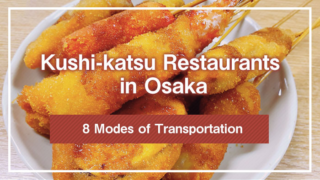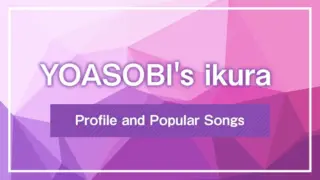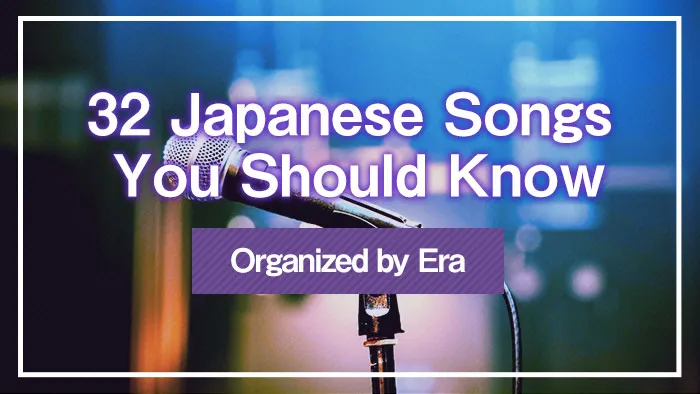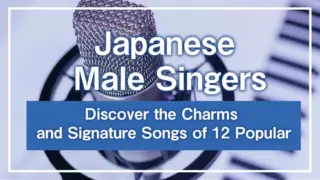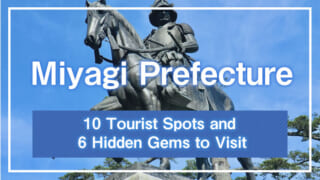Japanese music has touched the hearts of many with its unique, beautiful melodies and profound lyrics. Evolving with the times, the music scene has expanded from nostalgic Showa-era ballads to Heisei pop hits, and now to the fresh styles of the Reiwa era.
In this article, we’ll take a look back at the iconic songs that have shaped the history of Japanese music, introducing the artists behind them and exploring what makes these tracks so captivating.
- 1.Showa Era: Famous Japanese Songs You Should Know
- 1-1.”Rouge no Dengon” by Yumi Matsutoya
- 1-2.”Dancing Hero” by Yoko Oginome
- 1-3.”Kawa no Nagare no You ni” by Hibari Misora
- 1-4.”Plastic Love” by Mariya Takeuchi
- 1-5.”Aoi Sangosho” by Seiko Matsuda
- 1-6.”Pepper Keibu” by Pink Lady
- 1-7.”Cinderella Honeymoon” by Hiromi Iwasaki
- 1-8.”Ihoujin” by Saki Kubota
- 1-9.”I LOVE YOU” by Yutaka Ozaki
- 1-10.”MUGO…N Iroppoi” by Shizuka Kudo
- 2.Heisei Era: Famous Japanese Songs You Should Know
- 2-1.”Mirai Yosouzu II” by DREAMS COME TRUE
- 2-2.”Ito” by Miyuki Nakajima
- 2-3.”Kabutomushi” by aiko
- 2-4.”Eikou no Kakehashi” by Yuzu
- 2-5.”First Love” by Hikaru Utada
- 2-6.”Torisetsu” by Kana Nishino
- 2-7.”Kiseki” by GReeeeN
- 2-8.”Zankoku na Tenshi no Thesis” by Yoko Takahashi
- 2-9.”Hanamizuki” by Yo Hitoto
- 2-10. “Heavy Rotation” by AKB48
- 3.Reiwa Era: Famous Japanese Songs You Should Know
- 3-1.”Lemon” by Kenshi Yonezu
- 3-2.”Yoru ni Kakeru” by YOASOBI
- 3-3.”Gurenge” by LiSA
- 3-4. “Usseewa” by Ado
- 3-5. “Kaijuu no Hanauta” by Vaundy
- 3-6. “Dry Flower” by Yuuri
- 3-7. “Ao no Sumika” by Tatsuya Kitani
- 3-8. “Otona Blue” by Atarashii Gakko no Leaders
- 3-9. “Garden” by Fujii Kaze
- 3-10. “Dance Hall” by Mrs. GREEN APPLE
- 3-11. “Pretender” by Official HIGE DANdism
- 3-12.”Overdose” by natori
- Conclusion
1.Showa Era: Famous Japanese Songs You Should Know
A defining feature of Showa-era songs is their simple and concise lyrics. These songs are easy to remember and sing along to, making them popular across a wide range of generations. Those under 30 may not be familiar with the Showa era itself, but the singable melodies and emotionally rich lyrics of Showa ballads have also gained popularity among younger audiences.
1-1.”Rouge no Dengon” by Yumi Matsutoya
“Rouge no Dengon” serves as the opening theme for Studio Ghibli’s animated film Kiki’s Delivery Service. Written and composed by Yumi Matsutoya, the song was inspired by a scene from a movie she had watched, where a message was written on glass with lipstick. The lyrics illustrate a lover’s infidelity, which contrasts with the imagery of Kiki’s Delivery Service. However, its melody and certain phrases perfectly complement the scene where Kiki embarks on her journey. Both the song and the anime continue to be cherished by audiences across generations.
1-2.”Dancing Hero” by Yoko Oginome
“Dancing Hero” is an upbeat song characterized by its energetic and powerful chorus. When the song was released, Yoko Oginome was still a high school student. She initially felt uncertain about whether she could perform such a mature and powerful track, but it turned out to be a huge success.
Originally released in 1985, the song became a hit. Over three decades later, in 2017, it experienced a resurgence in popularity when the dance team from Osaka Prefecture’s Tomioka High School went viral with their choreography set to the song.
1-3.”Kawa no Nagare no You ni” by Hibari Misora
This song is so iconic that it can be called a quintessential Showa-era classic. It contains profound lyrics which compare life to the flow of a river, and feel timeless and never outdated to this day. Hibari Misora’s calm, rich voice creates a beautifully unique resonance, setting her apart from other artists. Though she passed away in 1989 at the age of 52, this song continues to be celebrated as a masterpiece cherished across generations.
1-4.”Plastic Love” by Mariya Takeuchi
“Plastic Love” experienced a resurgence in the late 2010s, gaining recognition worldwide through the internet. Its urban and sophisticated city pop melody has been praised as timeless. Mariya Takeuchi originally wrote this song to surprise her husband, Tatsuro Yamashita, by creating a track that he might want to sing himself. Ultimately, Tatsuro Yamashita handled the arrangement, adding his signature touch to the piece.
1-5.”Aoi Sangosho” by Seiko Matsuda
Sung by Seiko Matsuda, who was an immensely popular idol at the time, this song starts with a bright, summery, and liberating chorus. Despite its high-pitched opening, Seiko Matsuda delivers the song with a stable and effortlessly smooth voice, showcasing her exceptional vocal skills. The track has recently gained popularity among younger generations after being covered by the Korean girl group NewJeans.
1-6.”Pepper Keibu” by Pink Lady
This song marks Pink Lady’s debut, who, with their extremely short and tight costumes combined with bold choreography, shocked audiences across Japan at the time. It became a hit that was known by everyone, from adults to children. The song also won the Best New Artist award at the Japan Record Awards. An English version of “Pepper Keibu” is included in Rare Trax, an album released to celebrate Pink Lady’s 30th anniversary.
1-7.”Cinderella Honeymoon” by Hiromi Iwasaki
The charm of “Cinderella Honeymoon” lies in its unique style, which blends the Munich sound, a trend at the time, with traditional Japanese pop. The song marked a new chapter for Hiromi Iwasaki, who had just turned 20, showcasing her mature and alluring appeal through its sensual lyrics. It is also a favorite of Korokke, who is one of Japan’s most famous impressionists. The song’s enduring popularity can, in part, be attributed to its frequent appearances in Korokke’s performances, keeping it alive across generations.
1-8.”Ihoujin” by Saki Kubota
“Ihoujin” was Saki Kubota’s debut single, gaining immense popularity as a commercial jingle and eventually becoming a million-seller. The original version, titled “Shiroi Asa” (White Morning), was written and composed by Kubota, inspired by the view of University Avenue near Kunitachi Station on the Chuo Line, her hometown. The original form itself carried an exotic vibe which was amplified in the final version by the bold use of the dulcimer, a folk instrument, in the intro. This addition enhanced the song’s unique, foreign atmosphere.
1-9.”I LOVE YOU” by Yutaka Ozaki
Yutaka Ozaki is a legendary rock star in Japan, known for his lyrics that captured the rebellious spirit and struggles of youth. His songs resonated deeply with the younger generation at the time and continue to be celebrated today. Unlike his more defiant tracks, “I LOVE YOU” stands out for its bittersweet and tender melody. The song was created in response to a request from his producer, Akira Sudo, who asked Ozaki to write a ballad. He composed it in just a few days.
1-10.”MUGO…N Iroppoi” by Shizuka Kudo
This song with its eye-catching and unconventional title is a standout hit from the late Showa era.The lyrics were written by Miyuki Nakajima, and their departure from her usual style became a hot topic. Shizuka Kudo, known for her mature and sultry appeal since her debut, brings her signature charm to the track, and the way she delivers the phrase “N, Iroppoi” in the chorus perfectly captures her alluring presence.
2.Heisei Era: Famous Japanese Songs You Should Know
The Heisei era in Japan began alongside the collapse of the bubble economy. In the early years of Heisei, uplifting songs that encouraged people during a prolonged recession became popular. Later, the rise of idol groups like Johnny’s and Morning Musume, along with the emergence of talented female vocalists, marked a new phase in the music scene. Heisei was an era of diverse musical styles, showcasing a rich variety of J-POP that captivated audiences.
2-1.”Mirai Yosouzu II” by DREAMS COME TRUE
This song is a famous ballad performed at a slow tempo.Miwa Yoshida’s husky yet powerful vocals deliver a smooth and pleasant listening experience. Yoshida wrote the lyrics for “Mirai Yosouzu II” while she was still in high school. The phrase from the chorus, “A-I-SHI-TE-RU no sign”, became especially popular among women at the time. The song’s lyrics also inspired a movie adaptation.
2-2.”Ito” by Miyuki Nakajima
This song, written by Miyuki Nakajima, a singer-songwriter active since the Showa era, uses the metaphor of warp and weft threads in weaving to represent human relationships. The lyrics evoke imagery of carefully nurturing and weaving connections with others. Combined with its gentle and soothing melody, “Ito” is a popular choice for weddings. This timeless track has been coveredby many renowned artists, including Mr. Children, among others.
2-3.”Kabutomushi” by aiko
“Kabutomushi” is a beloved song by the powerful singer-songwriter aiko.The lyrics uniquely compare a young woman’s feelings of love to a rhinoceros beetle, making it stand out for its originality. Rhinoceros beetles are known for their inability to right themselves if flipped over, a weakness that inspired aiko to craft the song’s heartfelt lyrics. Unlike aiko’s typically upbeat tracks, “Kabutomushi” is a rare ballad in her repertoire.
2-4.”Eikou no Kakehashi” by Yuzu
This song is a popular track by the male folk duo Yuzu. It was featured as NHK’s theme song for the 2004 Athens Olympics. However, rather than being a victory anthem, the song portrays the resilience and hope of those who have faced setbacks and challenges. Its message of encouragement, not only for athletes but for anyone navigating their own struggles, is one reason for its widespread appeal.
2-5.”First Love” by Hikaru Utada
Hikaru Utada, an artist born in the United States, released “First Love” at the age of 16. The song’s mature lyrics and remarkable vocal ability, far beyond her years, took Japan by surprise. The album featuring this track sold over 8 million copies, a record in Japanese music history that, as of November 2024, remains unbroken. This song truly marked the beginning of a new era in J-POP.
2-6.”Torisetsu” by Kana Nishino
Kana Nishino is an artist who enjoys immense support from young women in Japan. Her relatable lyrics often portray the emotions of everyday women, and have resonated deeply with her audience. Among her hits, “Torisetsu” became widely discussed for its playful and unique lyrics. The song likens a woman’s somewhat selfish inner thoughts to an instruction manual. It not only captured the hearts of many women, it also drew attention from men for its perceived overly demanding tone.
2-7.”Kiseki” by GReeeeN
GReeeeN is a vocal group whose members all hold dental licenses and balance their music careers with their work as dentists. As a result, they have never revealed their faces since their debut. Their exceptional talent has earned them a place among Japan’s top artists purely through the quality of their music. “Kiseki” holds the Guinness World Record for being the most downloaded song in Japan.
2-8.”Zankoku na Tenshi no Thesis” by Yoko Takahashi
“Zankoku na Tenshi no Thesis” became widely known as the theme song for the TV anime Neon Genesis Evangelion.It is also a famous karaoke hit, ranking first overall in the Heisei karaoke charts. The song is characterized by its upbeat, fast-paced melody and philosophical, complex lyrics. Yoko Takahashi has mentioned that whenever she performs the song on her world tours, audiences from all countries sing along with her. This track is a quintessential Japanese anime song and is beloved across borders.
2-9.”Hanamizuki” by Yo Hitoto
“Hanamizuki” is characterized by its gentle and beautiful melody. Sung by Yo Hitoto, the song’s lyrics were also written by her. The inspiration for this song came from the tragic events of the September 11, 2001, terrorist attacks in the United States. It is said that Hitoto wrote the lyrics while wishing for the safety of a friend living in New York. It has an easy-to-sing, soothing melody, and heartfelt lyrics that wish for the happiness of loved ones. This song is cherished by people of all generations.
2-10. “Heavy Rotation” by AKB48
This is a popular song by AKB48, known for its energetic and upbeat melody that has captured the hearts of many. It’s a staple at karaoke, perfect for group singalongs. The title “Heavy Rotation” originally refers to something that is repeated frequently in a short period. In this song, it conveys the idea of constantly thinking about a beloved partner over and over again.
3.Reiwa Era: Famous Japanese Songs You Should Know
The Reiwa era has offered emotionally charged melodies and frequent use of minor chords which have gained steady popularity. Influences from Showa-era ballads can often be observed in the composition and lyrics of trending songs, leading to the term “Reiwa Kayou” (Reiwa ballads).
Unlike past hit songs, which often became popular through tie-ins with TV dramas or commercials, many Reiwa-era tracks have gained traction via online platforms like streaming services and social media. The rise of artists who began composing using Vocaloid software, such as Hatsune Miku, has also become increasingly prominent.
Below, we introduce some of the most iconic songs of the Reiwa era.
3-1.”Lemon” by Kenshi Yonezu
Kenshi Yonezu is a singer-songwriter who represents the Reiwa era. Among his many creations, “Lemon” stands out as one of his most popular songs, known for its memorable, melancholic melody and poignant lyrics. The song was commissioned as the theme for the medical drama Unnatural, and Yonezu composed it specifically for the series. “Lemon” became an instant hit upon release and captured the hearts of listeners across Japan.
3-2.”Yoru ni Kakeru” by YOASOBI
This is a pop song characterized by its rapid melodic shifts and lively piano sound. It was created by the duo YOASOBI, consisting of Ayase, a Vocaloid producer, and ikura, a singer-songwriter.“Yoru ni Kakeru” features intricate melodies, often found in Vocaloid music, that are notoriously difficult for humans to sing. Its innovative and fresh composition makes it a quintessential track of the Reiwa era.
3-3.”Gurenge” by LiSA
“Gurenge” is the opening theme song for the popular TV anime Demon Slayer: Kimetsu no Yaiba. The track is performed by LiSA, a rock singer who had already gained recognition for singing various anime theme songs prior to the release of “Gurenge”. Her powerful and beautiful vocals have been highly praised.
The lyrics of “Gurenge” are written by LiSA and are noted for their strong connection to the story of Demon Slayer, making the song a perfect match for the anime. Together, the song and the show became a cultural phenomenon.
3-4. “Usseewa” by Ado
This is a hit song by Ado, known for her intense and commanding vocal style. The lyrics of “Usseewa” dismiss the unreasonable conventions of society with a sharp “Shut up!”, creating a sensation for their refreshing bluntness. It’s a song with such a strong impact that it’s unforgettable after just one listen.
The track was written and composed by Vocaloid producer syudou. Its challenging leaps in melody reflect the innovative style often seen in Vocaloid compositions.
3-5. “Kaijuu no Hanauta” by Vaundy
“Kaijuu no Hanauta” is a song with a refreshing and catchy melody in the chorus.The ascending scales are sung in a beautiful falsetto by Vaundy, a male vocalist. Originally gaining attention on social media, Vaundy rose to prominence and performed this track during his debut appearance at the 2022 NHK Kohaku Uta Gassen, bringing the song even greater recognition.
3-6. “Dry Flower” by Yuuri
“Dry Flower” is a ballad that gained popularity for its poignant lyrics about heartbreak and its delicate melody. In particular, the chorus showcases Yuuri’s soft and transparent voice, leaving a lasting impression on listeners. The song entered the top 10 of Billboard JAPAN’s “JAPAN HOT 100” and remained there for over a year, solidifying its status as a beloved hit.
3-7. “Ao no Sumika” by Tatsuya Kitani
“Ao no Sumika” was released as the opening theme for the popular TV anime Jujutsu Kaisen, and has been praised for its lyrics which align perfectly with the anime’s unique world. Tatsuya Kitani, a singer-songwriter known for his dark rock sound, ventured into new territory with this track. “Ao no Sumika” brings a refreshing sense of youthfulness, marking a new chapter in his musical career.
3-8. “Otona Blue” by Atarashii Gakko no Leaders
“Atarashii Gakkou no Leaders” is a four-member female unit known for their unique music and performances.Their song “Otona Blue” delivers an unforgettable impact with its Showa-era-inspired melody and powerful vocals. The official music video for the track features a distinctive dance move where the neck slides sideways, dubbed the “neck-swing dance.” This choreography has especially become popular on TikTok,where many young people have taken to replicating the moves.
3-9. “Garden” by Fujii Kaze
This song gained attention for its unexpected structure. It starts with a calm and beautiful melody repeated in a simple arrangement, but in the latter half, it builds into a stunning climax, like a flurry of flower petals in the wind.
Fujii Kaze is known for his versatility, excelling in everything from upbeat tracks to heartfelt ballads. “Garden” is a laid-back song with subtle yet impactful accents. Its charm lies in how it doesn’t remain a purely mellow tune, but instead evolves with dynamic flourishes that leave a lasting impression on the listener.
3-10. “Dance Hall” by Mrs. GREEN APPLE
“Dance Hall” was created as the theme song for the morning show Mezamashi 8. It is true to its title and opens with a lively and fun chorus that makes you want to dance. The track was composed by the rock band Mrs. GREEN APPLE, who commented that they wrote “Dance Hall” with the hope of finding joy even in a world filled with sadness.
3-11. “Pretender” by Official HIGE DANdism
This song has been praised by renowned artists such as Ayase from YOASOBI and Atsushi Yanaka from Tokyo Ska Paradise Orchestra. Its captivating melody, which immediately enchants listeners, has brought a fresh wave to the Japanese music industry. The song, whose lyrics center on the theme of heartbreak, is also notable for its masterful use of rhymes, which makes it a pleasure to sing along to.
3-12.”Overdose” by natori
“Overdose” is a song released by Natori in 2022 which gained massive attention thanks to TikTok and captivated a large youth audience with its danceable beat and cool vocals. The short videos posted on TikTok created a buzz, and the music video also drew significant attention on YouTube.With over 400 million streams, the song enjoys overwhelming popularity. Natori’s mysterious persona, as they keep their detailed profile undisclosed, adds another layer of intrigue to their appeal.
Conclusion
Japan’s music scene has produced a wide variety of iconic songs across different eras. From Showa-era ballads to Heisei J-POP and the fresh trends of Reiwa, many tracks have become beloved across generations. These songs are representative of their respective times but also have left a lasting imprint on our memories and emotions.
If you discover a favorite among the songs introduced here, we encourage you to explore more of the artist’s works and learn about their journey.
*This article is based on information available as of 12 2024.



